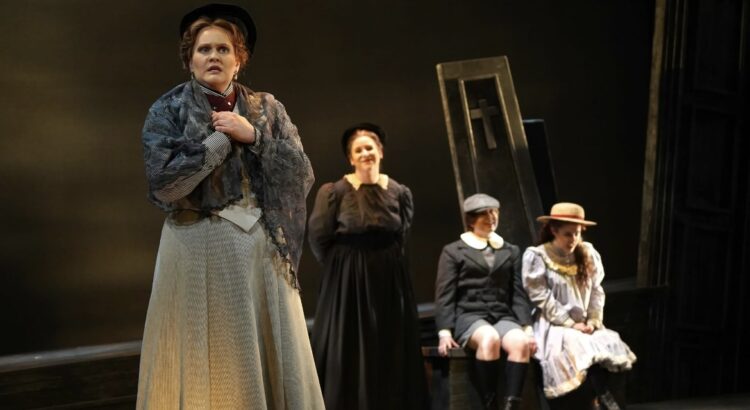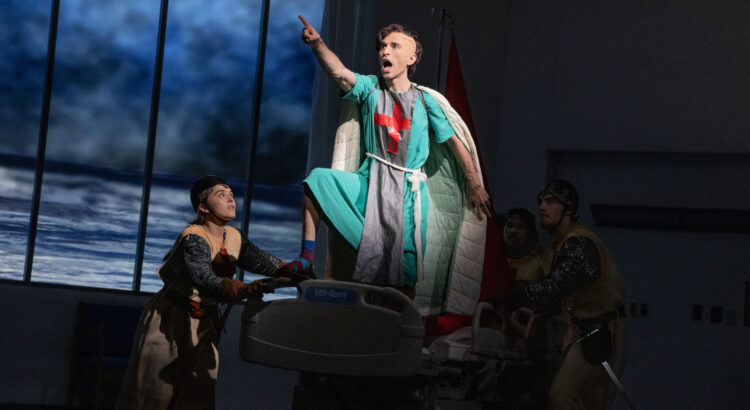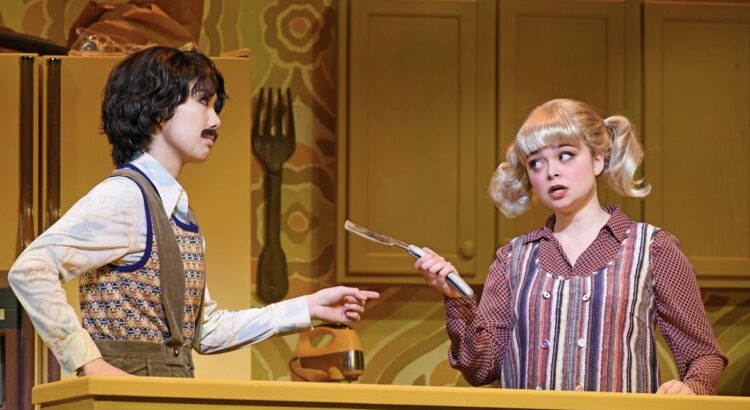March 28 | 7:30 | The Lydia Mendelssohn Theater
Slightly haunted, challenging and contemplative— The Turn Of The Screw is a properly spooky ghost story. The novella by 19th-century writer Henry James is a piece of gothic fantasy best known for its adaptation into the opera by English composer Benjamin Britten and librettist Myfanwy Piper.
The eerie disposition felt akin to Sweeney Todd’s dreary Fleet Street or last season’s Elizabeth Cree at SMTD. Britten’s work features just 6 voices from the Department of Voice and Opera and 13 instruments in the orchestra.
We arrive at a remote country house in East England at the turn of the previous century. A young governess (Christina Parson) is hired to care for two children, Miles and Flora (the lively Haley Hunt and Francesca Herrera), alongside Mrs. Grose (Danielle Casós), the housekeeper. As time passes, the Governess becomes convinced that the house is haunted by malevolent spirits of a former servant, Peter Quint, and governess, Miss Jessel (played respectively by Alexander Nick and Jennie Rupp, an earth-shattering soprano). Her obsession with protecting the children intensifies as the line between reality and delusion blurs, leaving the true nature of the threat ambiguous.

Christina Parson (the Governess) sparkles musically and dramatically, as if the score was written for her. She seldom leaves the stage during the performance, proving a role made for a seasoned soprano with stamina. Her journey is emotional, as she challenges paranoia amid her deep compassion. Parson crafts a beautiful arc for this character, especially as the erratic feelings intensify.
The ambiguity feeds into the tense storytelling, sonically and dramatically, making it the true enchantment of the piece. This opera succeeds on its intellect and the brilliance of the performers. The cast of six performs with a vocal maturity far beyond their years as well as cultivates the most dramatically satisfying opera I’ve seen at the University: the chemistry of Herrera and Hunt was joyful, and Rupp and Nick were a chilling duo onstage. Ms. Casós has enjoyed many fantastic performances in University Operas over the years, and her elegant Mrs. Grose was no less enchanting.
This score is unlike that of Mozart or Puccini—Britton’s score feels more like a soundscape than a dramatic statement. It houses some evocative nostalgia but doesn’t give the audience a memorable tune to carry out of the theater. Though Myfanwy Piper’s libretto is full of vitality, young Miles’ deathly call, “Malo,” still echoes in my head.
Image thanks to Univ. of Michigan SMTD.
















